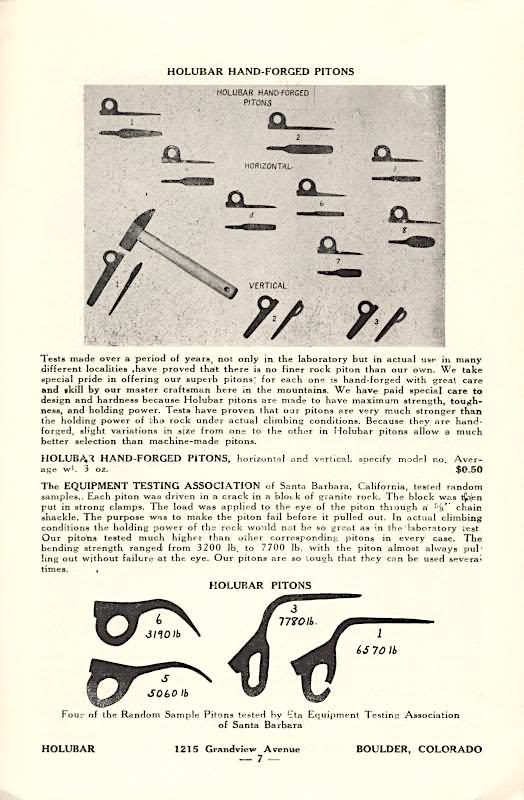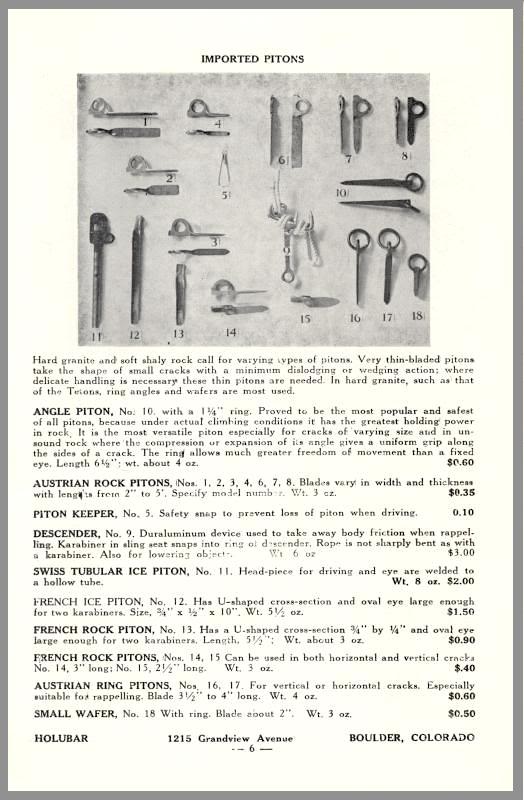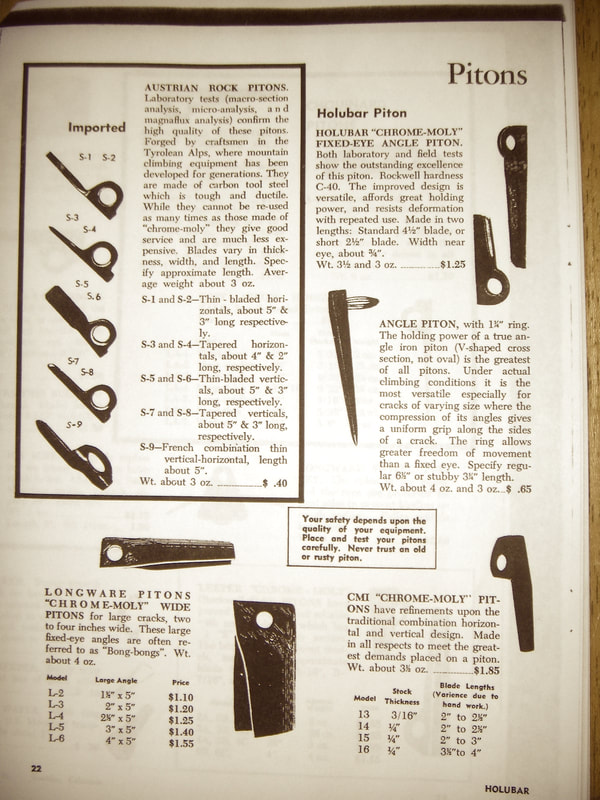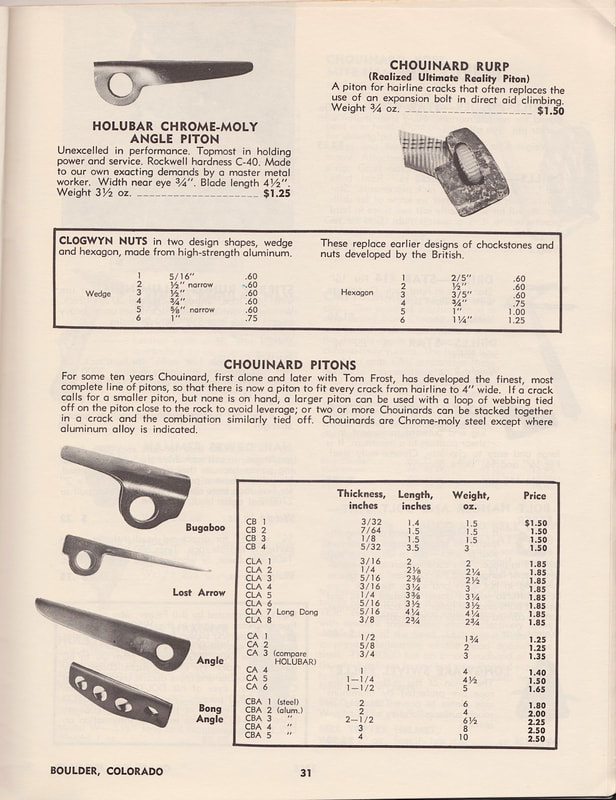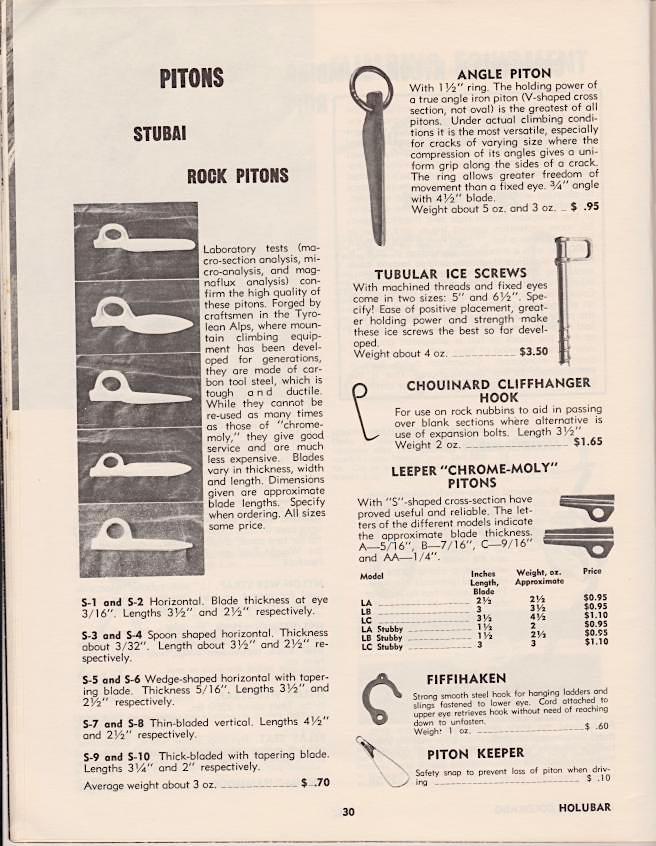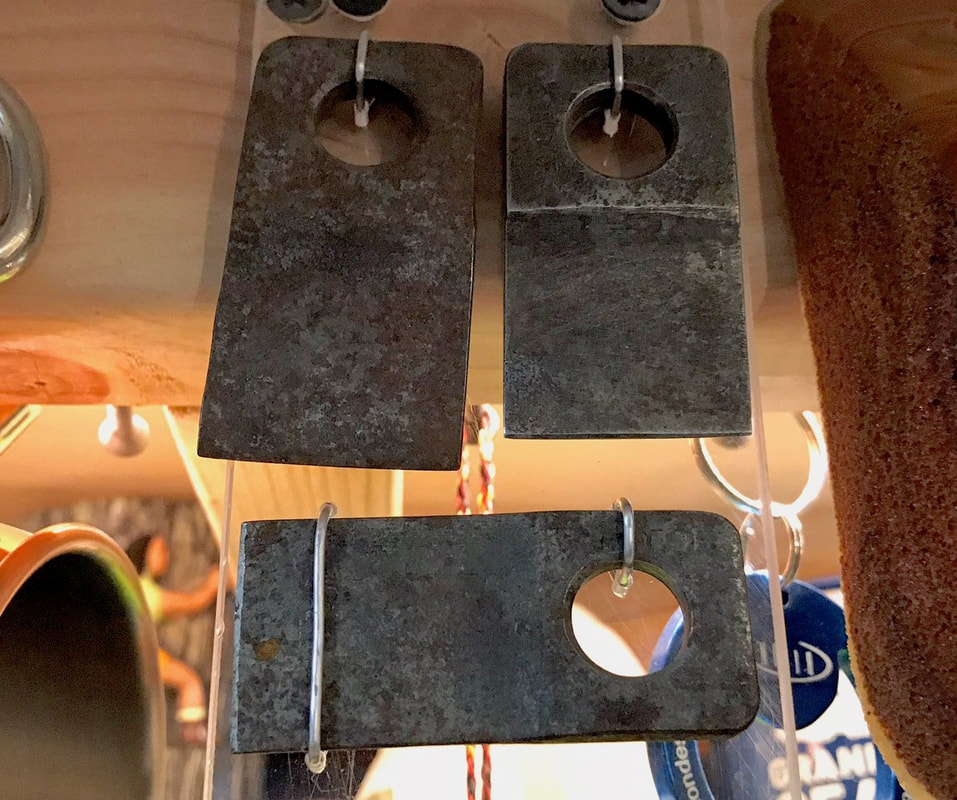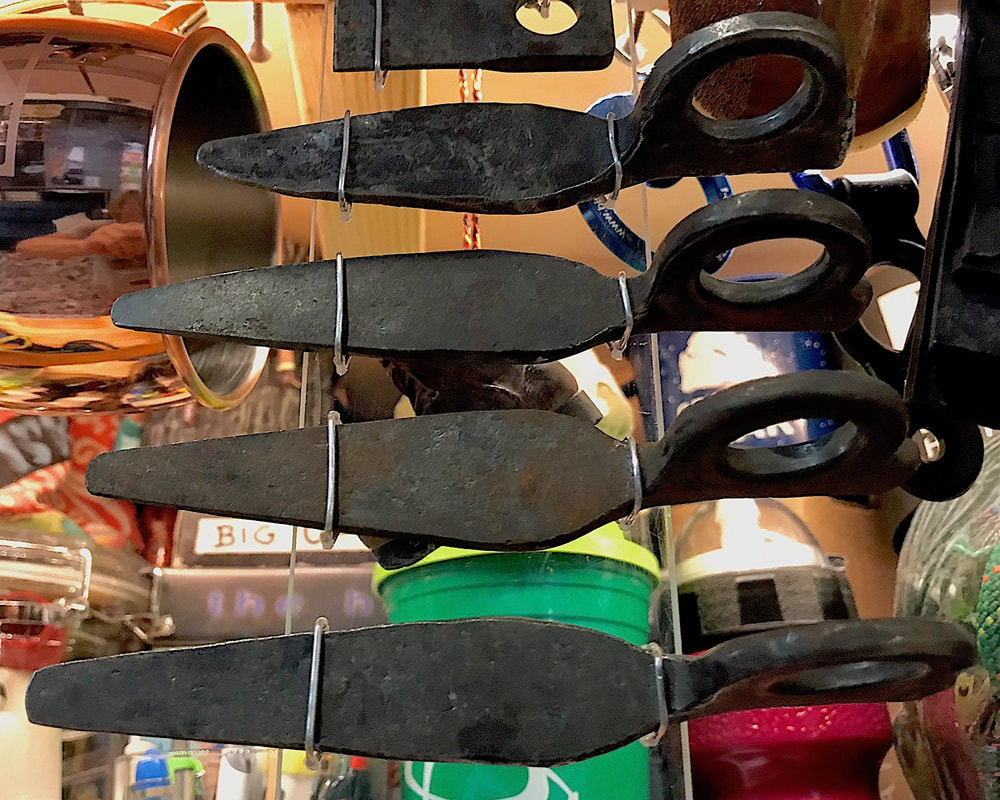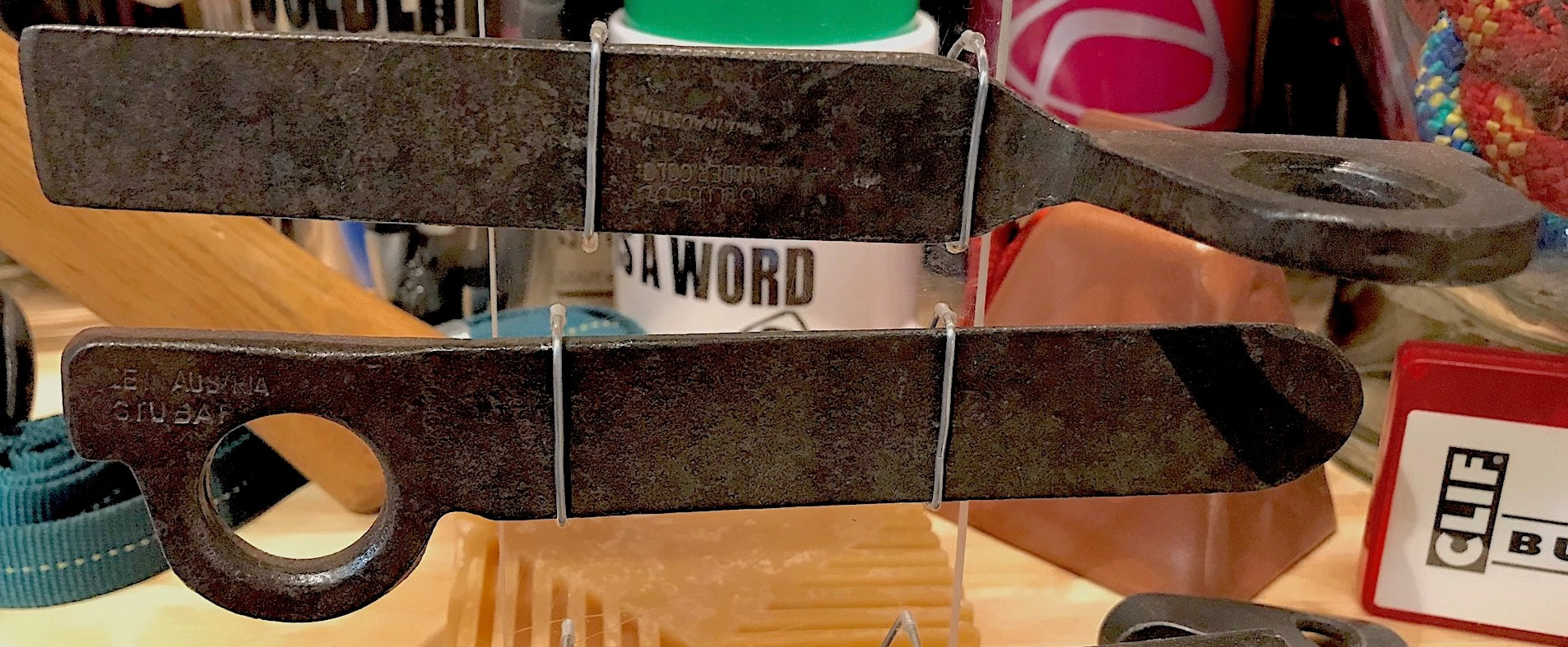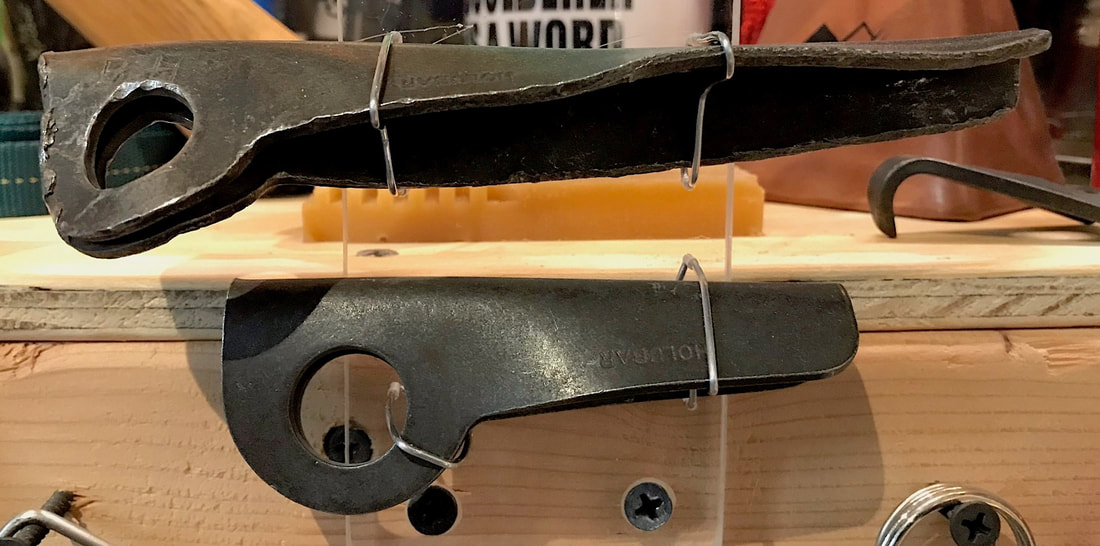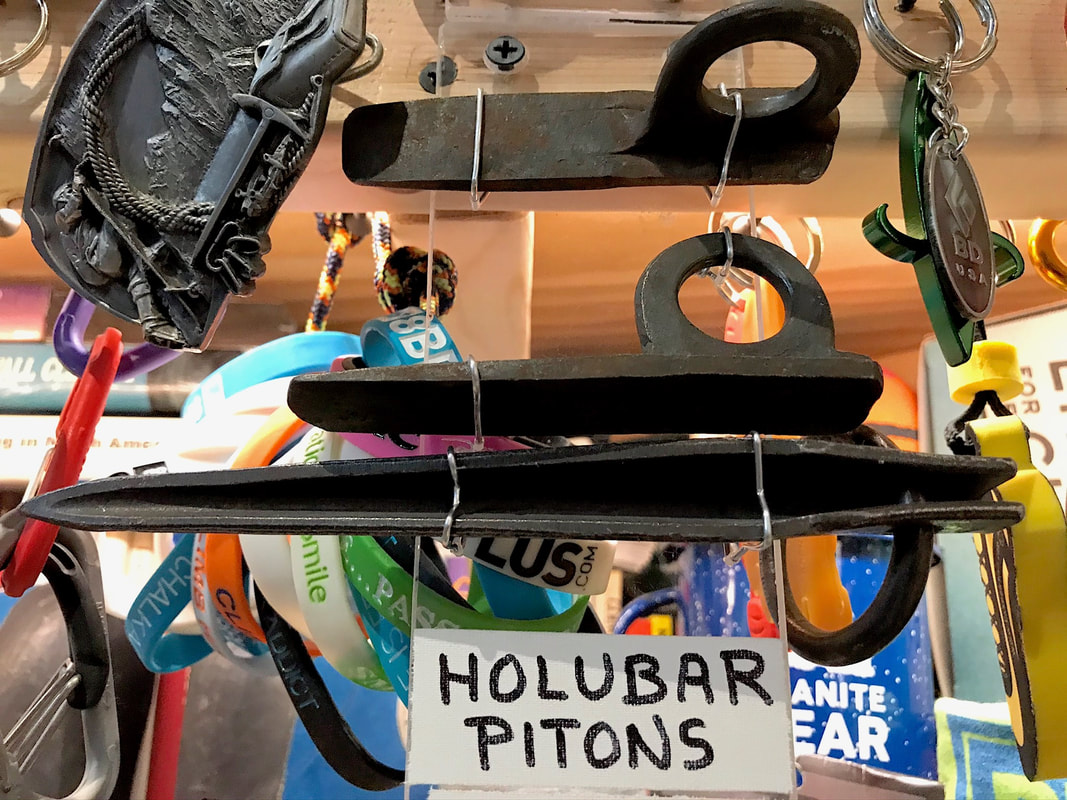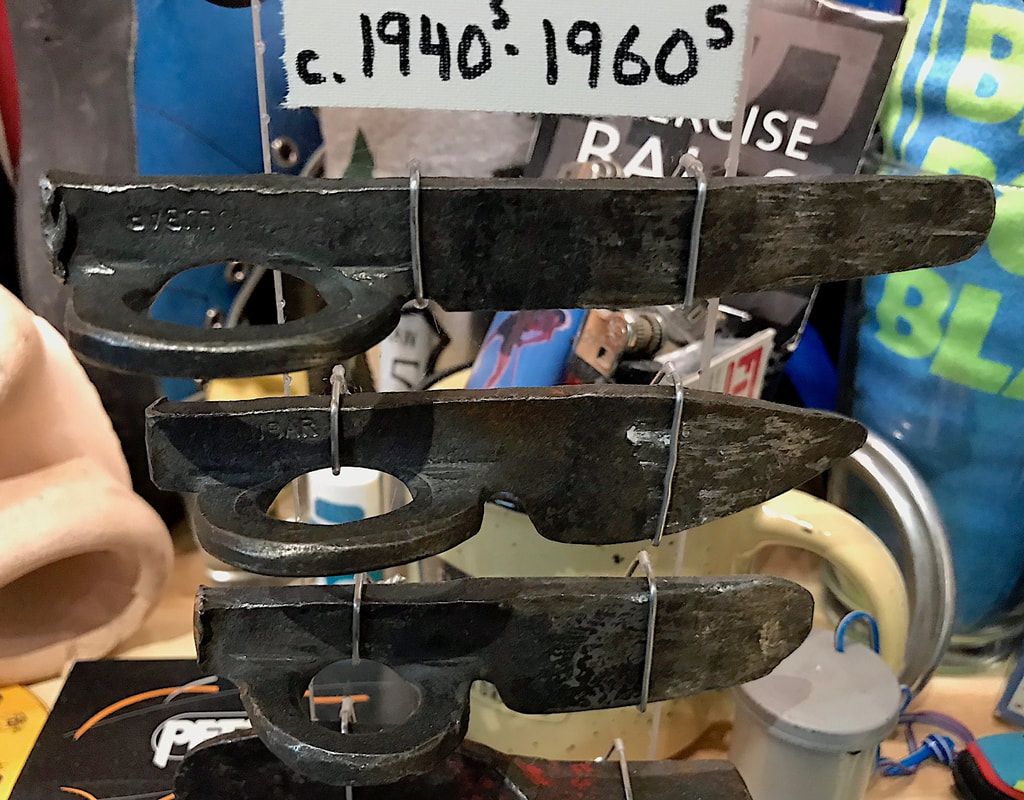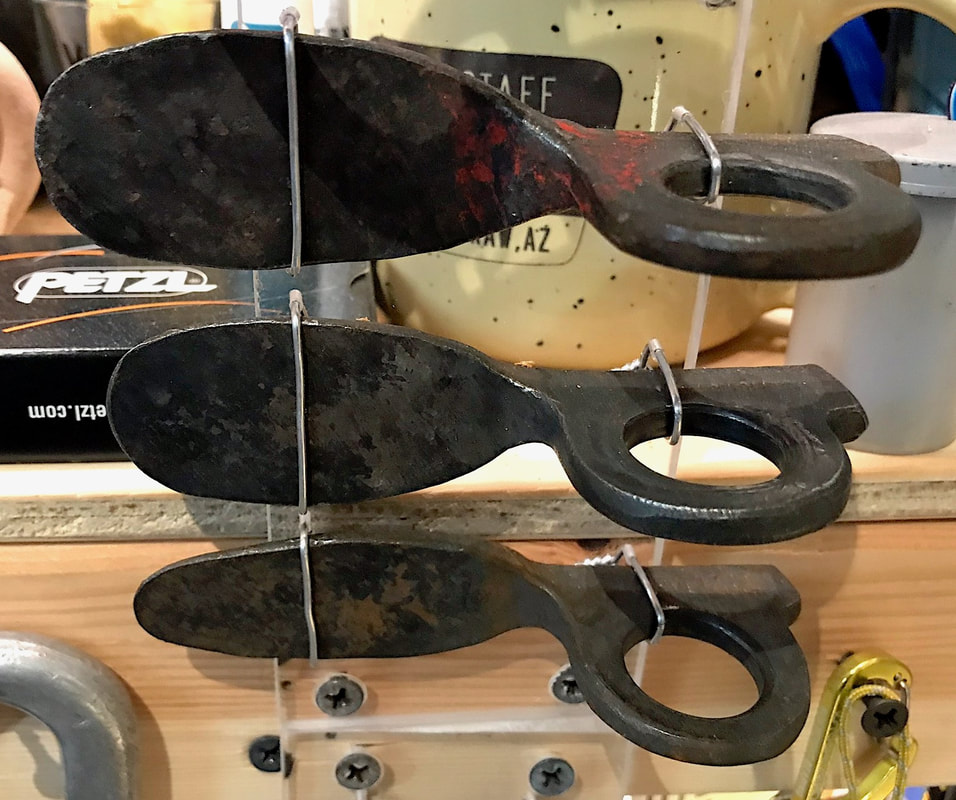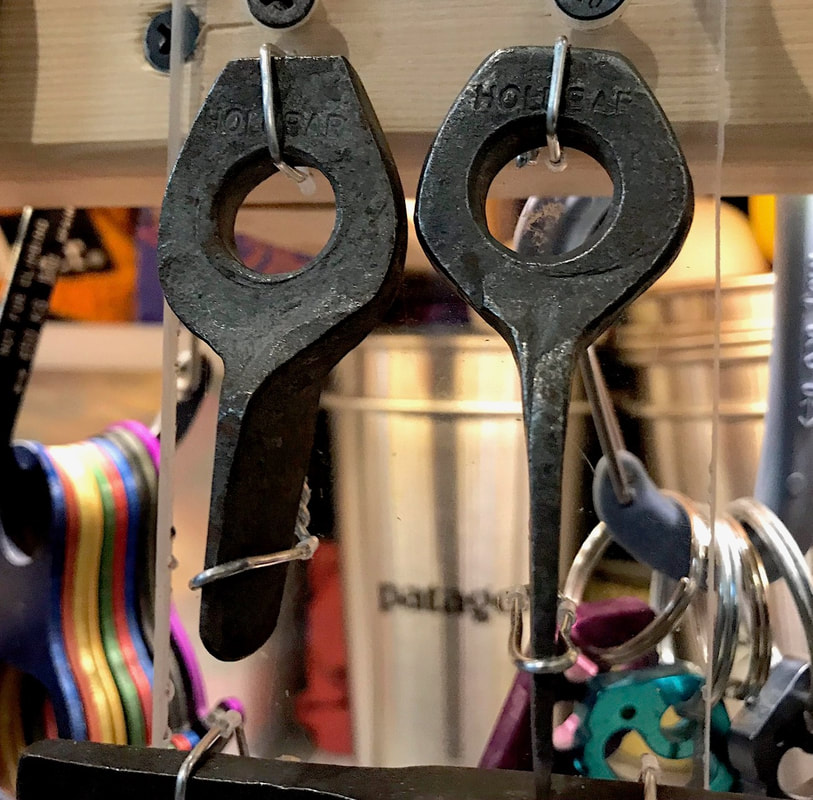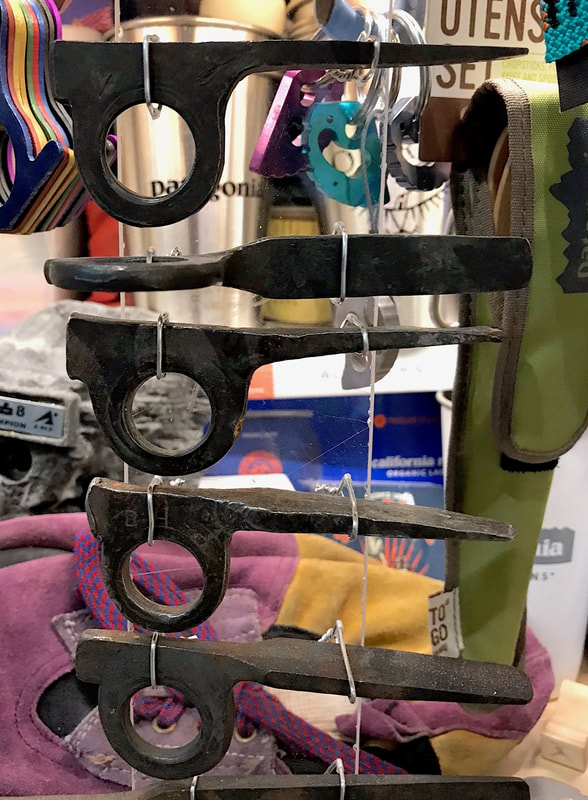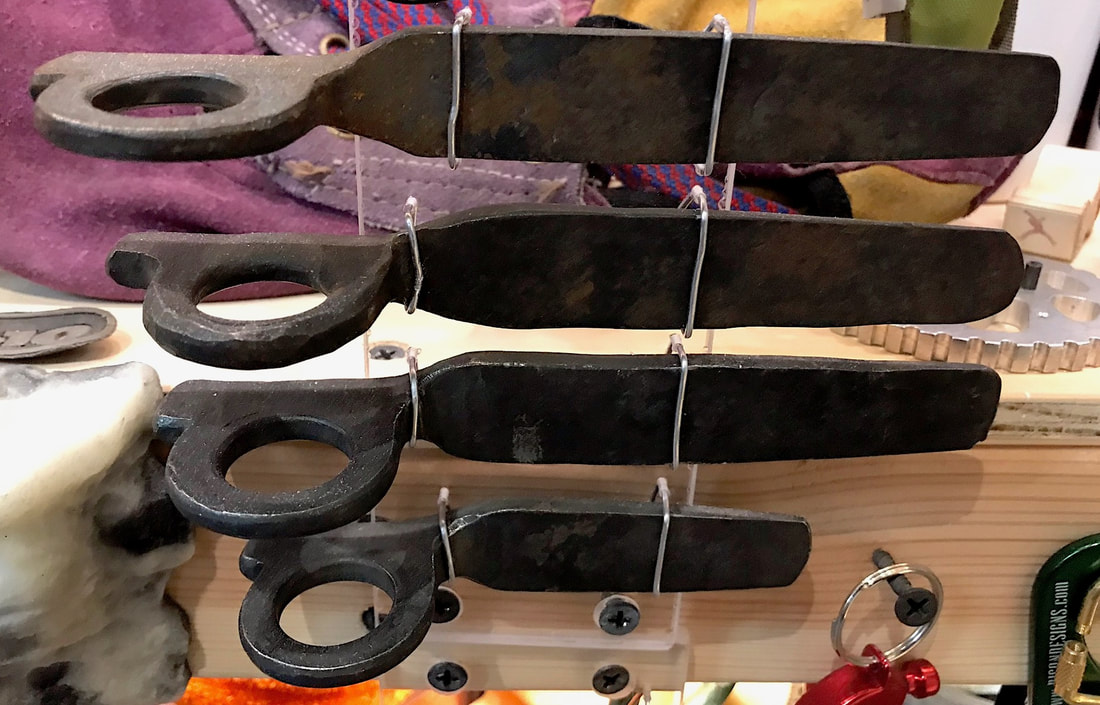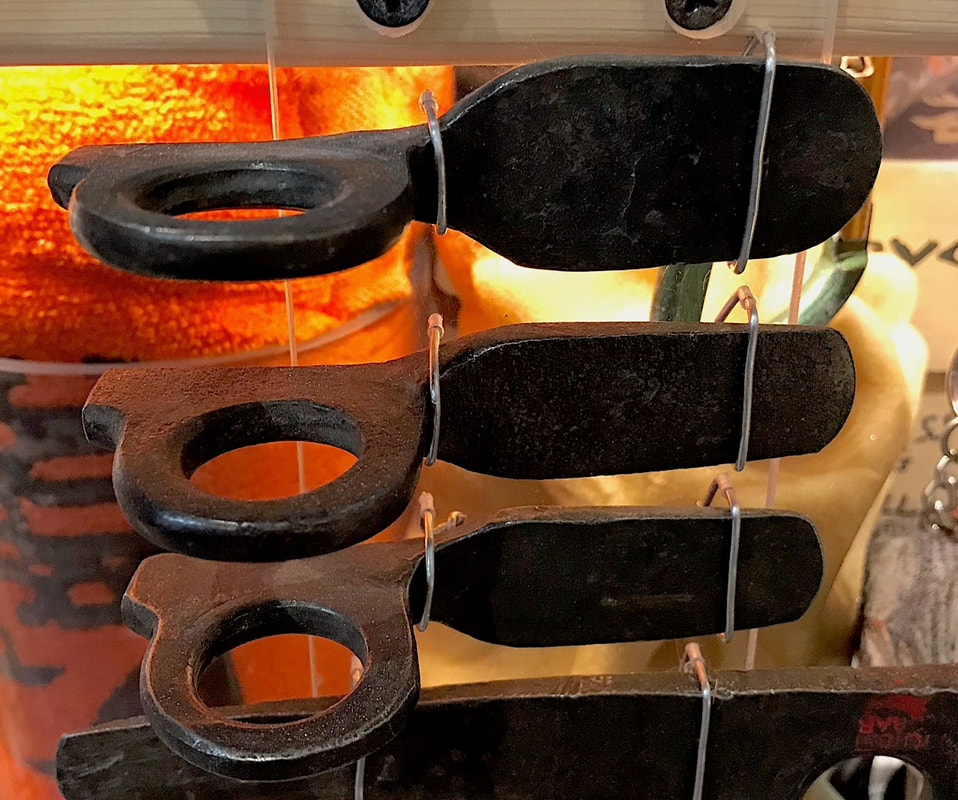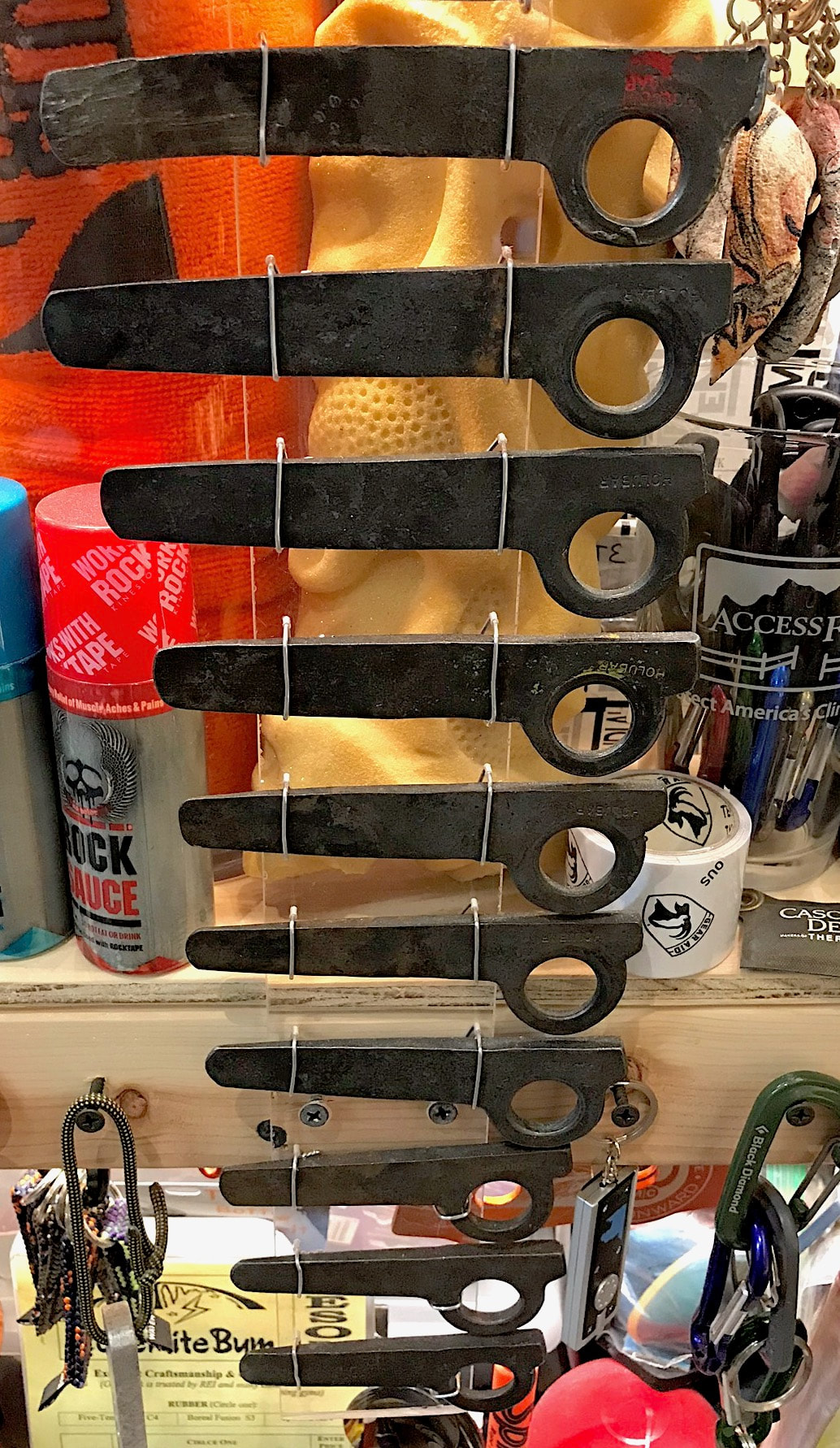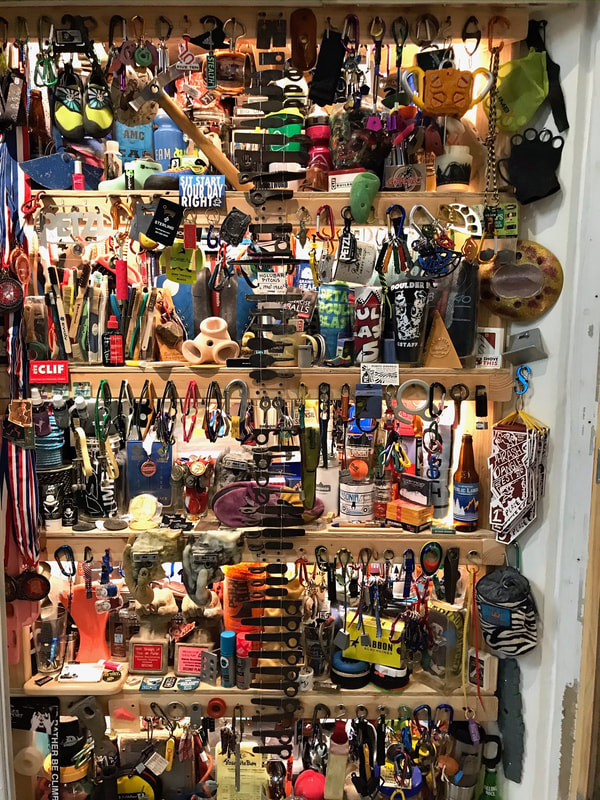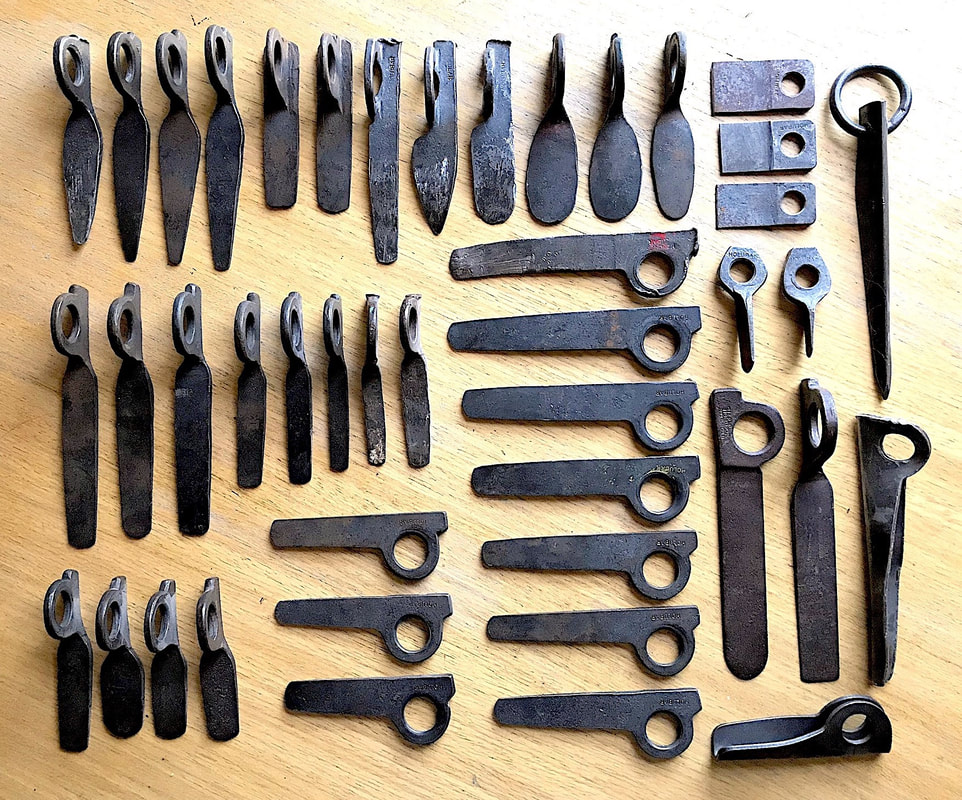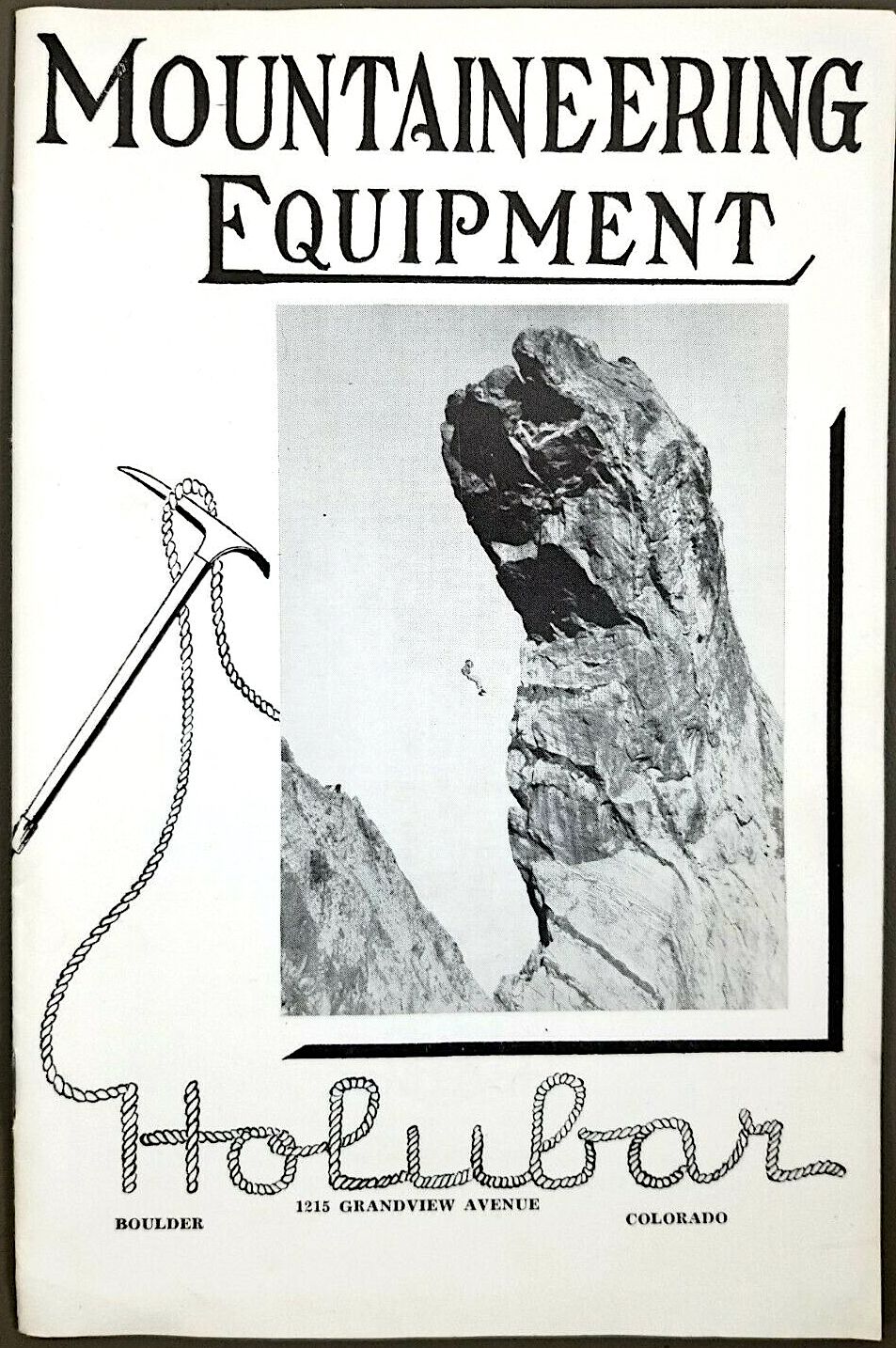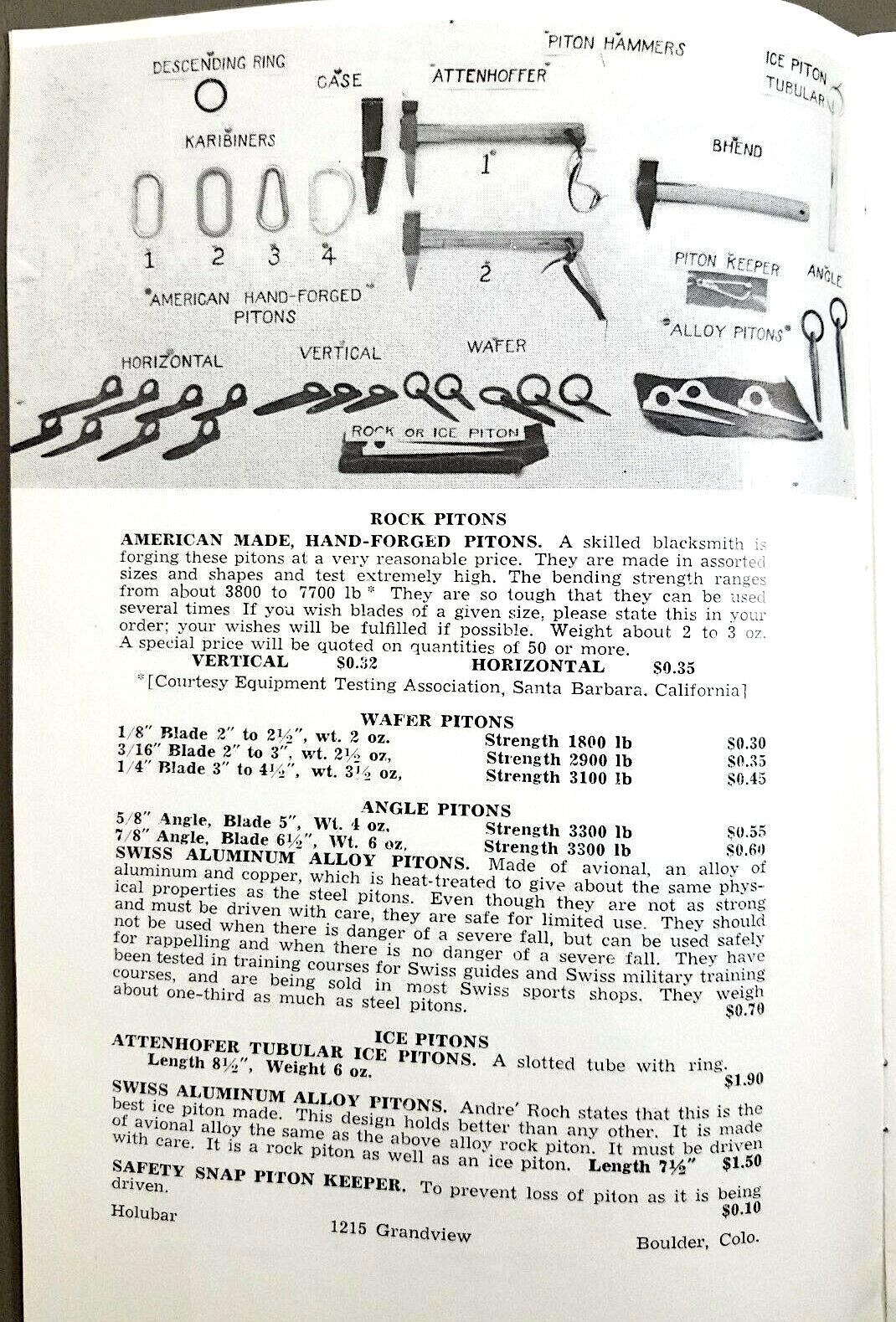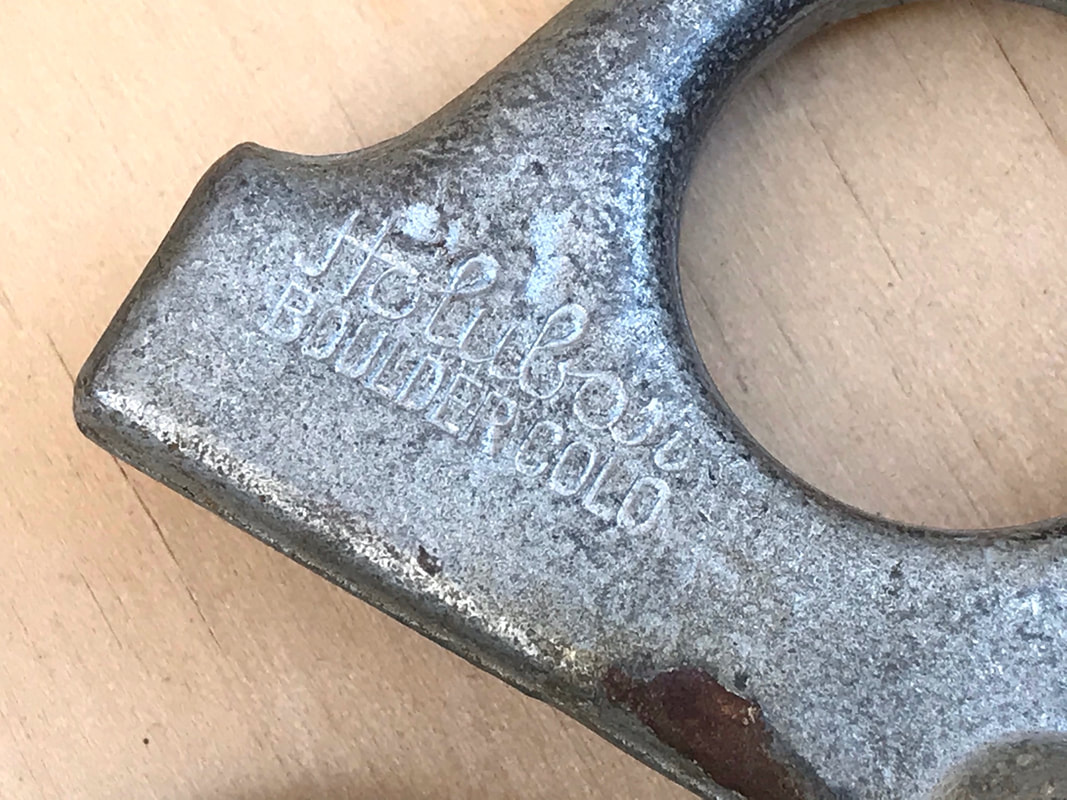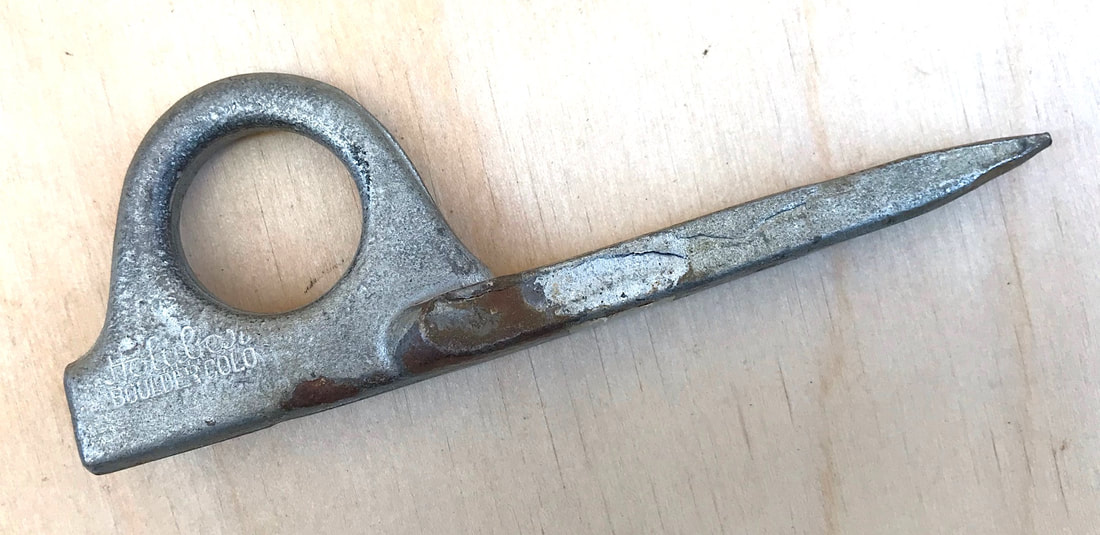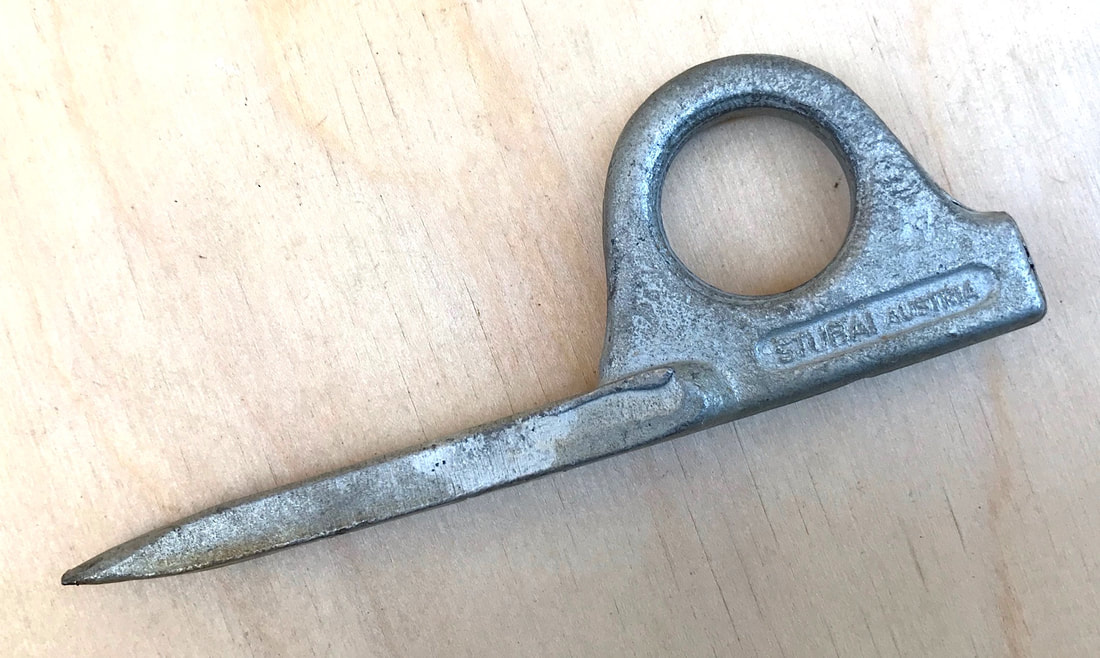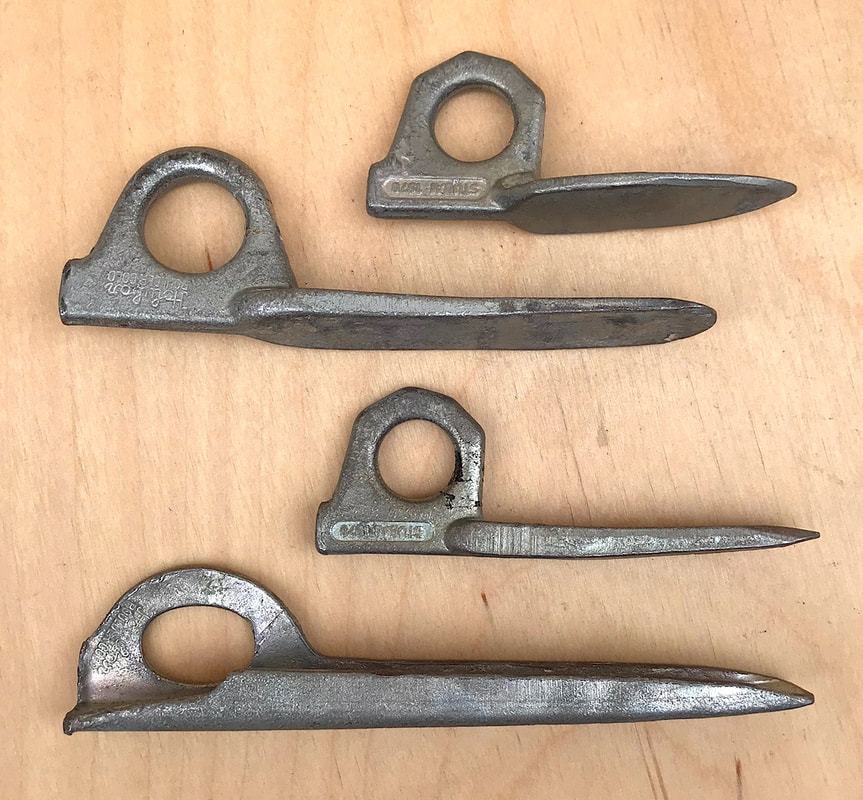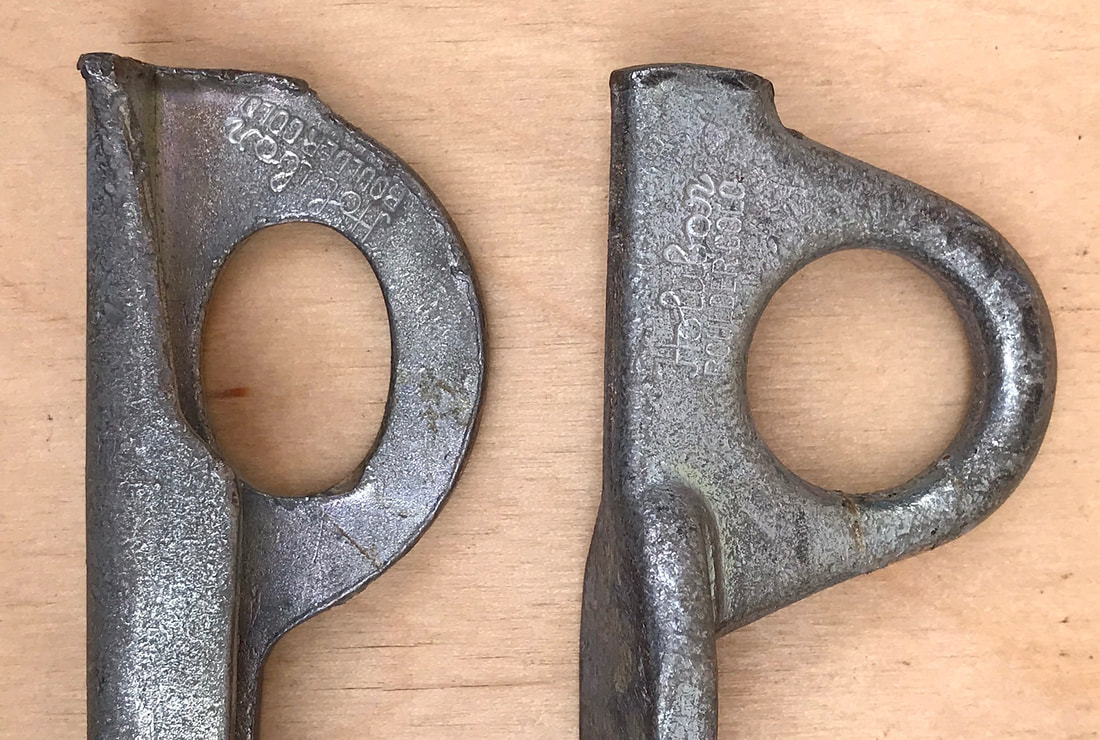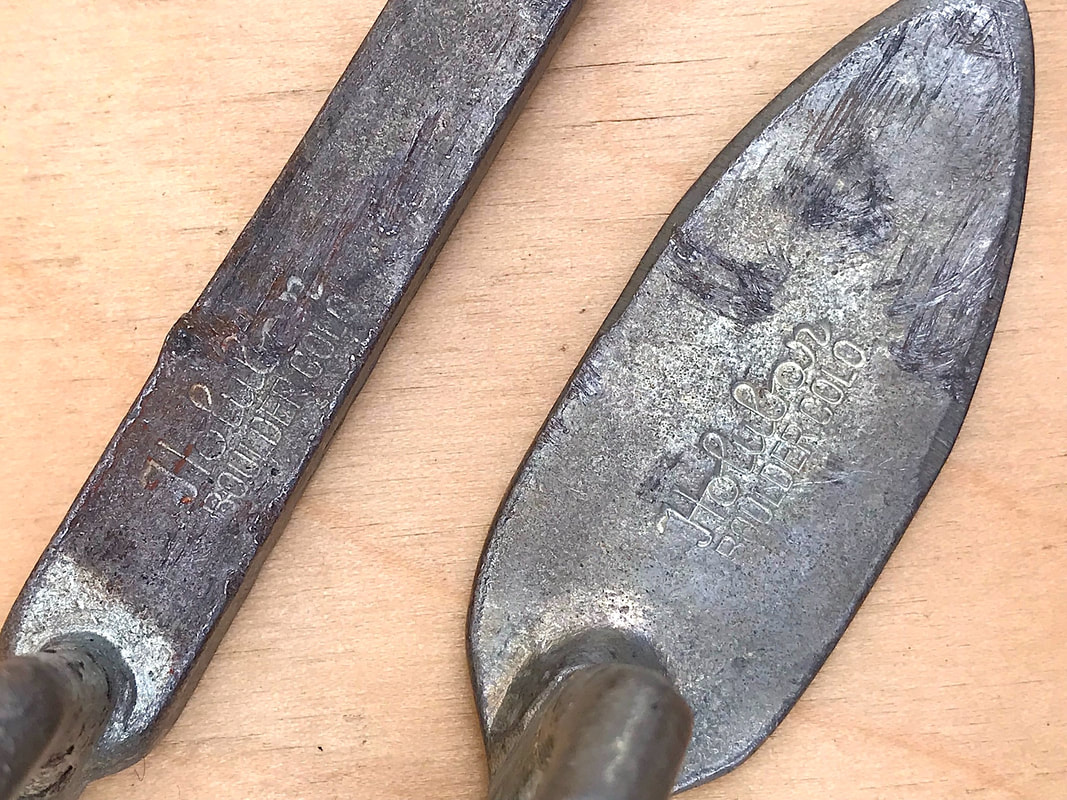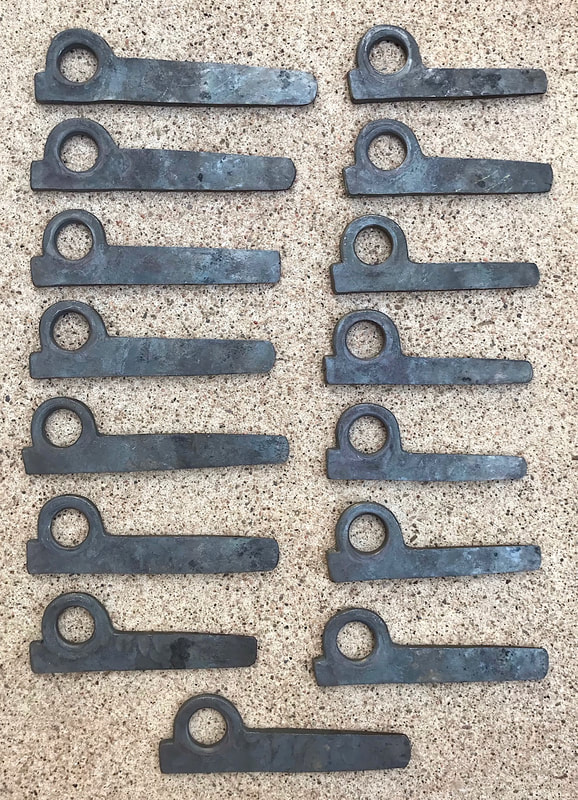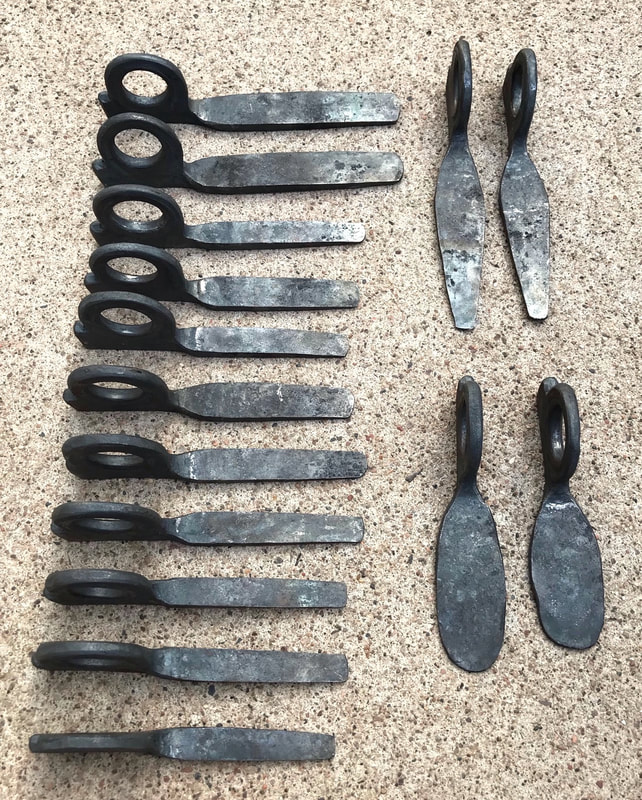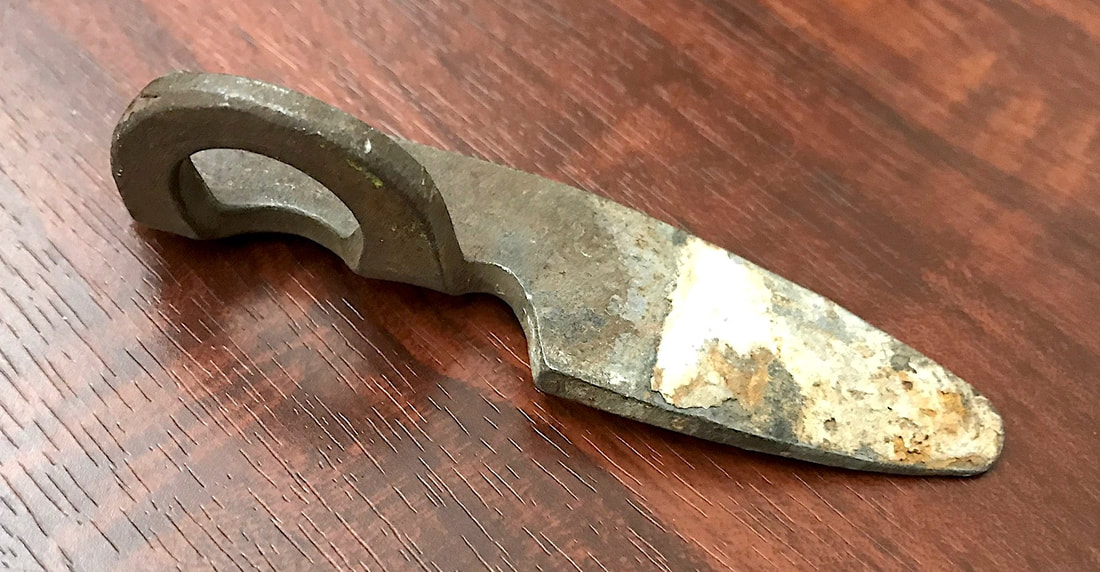Showing 44 different Holubar pitons located in the Schwag Bookcase display at the Phoenix Rock Gym. Holubar pitons are from 1940s - 1960s.
|
Years ago I got a few Holubar pitons from Wally Vegors. He climbed with them from 1946 to 1949. I have seen many different shapes of Holubar/Austria pitons, how many different shapes were made? On some of the pitons the word "Holubar" is written in cursive. On other pitons the word "Holubar" is written in capital letters. On the 1940s set of pitons is both cursive and capital mfg markings.
Holubar history from - Holubar Facebook: Holubar, a classic brand of the american “Outdoor Gear” , was born in Colorado in 1946 from an idea of Alice and Roy Holubar , and began informally its business with the sale of army surplus down-filled sleeping bags and expanding then the offering to parkas, backpacks and climbing pitons. For the Holubars their great passion for the outdoors activities gradually turned into a real business until the formal start of Holubar Mountaineering in 1947. At the beginning the activity developed primarily as a typical "mail order" business to get to 1958 with a catalog of 143 products. The brand quickly imposed its presence on the market, initially in Colorado and then throughout the United States for the excellent quality of its products and a pioneering approach of Alice and Roy Holubar to whom we owe a great number of technical innovations that have inspired over the years many of the most renowned companies of the 'Outdoor Gear' as the use of nylon, the invention of a special “sandwich” padding made of down feathers and “Holufill” (polyester), conceived to accelerate the drying process or the innovative "wavy" quilting. From the store in Boulder, adjacent to the first lab, Holubar developed a chain of flagship stores in several U.S. states. One of the reasons that enact the success of many of the innovations introduced by the Holubars since the early years is that Roy and Alice Holubar had always maintained close relations with the world of climbers and outdoor enthusiasts. This proximity to the world of outdoor professionals meant that each of the technical innovations introduced by the Holubar was the result of an exchange of ideas with the same users of products and were determined by real needs of functionality arising from experience. As already happened to other major brands of the american Outdoor Gear business, Holubar also began to gain recognition and fame gradually beyond the scope of professional users: Holubar became one of the best known brands of outerwear of America for general city use. The brand was able to take advantage of this development meeting the tastes of a young audience with stylistic contributions that nothing took off anyway with quality content and functionality of each garment : this ability to combine technical excellence with a contemporary look, took Holubar to gain an important position also in the kids market. In 1968, the Holubars decided to sell the business and in the ‘80s the brand virtually disappeared from the market; its loyal customers had no choice other than to collect the vintage garments of the brand. .......................................................
Steve Grossman writes: (From: Supertopo forum) The block letter HOLUBAR pitons were made by a non-climber blacksmith named Bob Bruning. Alice and Roy bought some property that had a mine on it and Bob needed something to do so they had him start making pitons. He made some lovely horizontals out of tool steel that were a step toward alloy steel.
Eventually Holubar and Gerry and introduced alloy steel ringless angles for several years until a well-publicized failure of an inverted Gerry stubby angle that was attributable to a tempering flaw. The more elaborate stamp represented a collaboration between Holubar and Stubai through Roy's ties to Austria that existed long before Bob Bruning showed up and domestic production started. Holubar 1954-1955 catalog
Holubar 1954 - 1955 catalog
Holubar 1966 catalog
Holubar 1969 catalog
Holubar 1969 catalog
|
The line of Houbar pitons is in the center of this photo of the schwag bookcase at the PRG.
|
................................................................................................
Stubai Holubar pitons, late 1960s/1970
Doanted by: Carolyn/Brad Davidson
Doanted by: Carolyn/Brad Davidson
.......................................................................................
I am not sure what the full story is with these pitons. For sure they look like they were made by Holubar but there are no markings on the pitons. The pitons are not fully finished having somewhat sharp edges and are quite dirty. Original owner of the pitons was Frank Applegate. Maybe Frank obtained them directly from the Holubar blacksmith, unknown.
